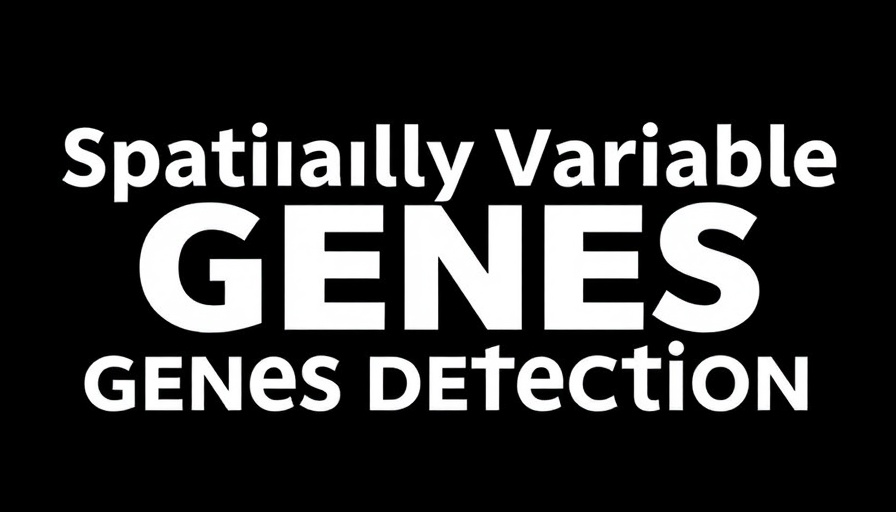
Understanding the Rise of Spatial Transcriptomics
As the field of genomics evolves, spatial transcriptomics (SRT) emerges as a groundbreaking technique that allows scientists to investigate gene expression not just on a cellular level, but also in the context of spatial organization within tissues. Traditional methods such as single-cell RNA sequencing fail to retain this spatial context, making SRT a vital tool in understanding complex biological phenomena. But with the rapid advance of technologies and the increase in data complexity, particularly concerning spatially variable genes (SVGs), robust statistical methods are essential for drawing accurate conclusions from this data.
The Importance of Identifying Spatially Variable Genes
The identification of SVGs is not just an academic pursuit; it holds real implications for medical research and treatment. Misinterpretation or lack of identification of certain genes could lead to overlooking crucial biological interactions or disease mechanisms. According to the recent review published in Nature Communications by Yan and colleagues, understanding which genes vary spatially is key for paving the way towards personalized medicine, where treatments may be developed based on the gene expression profile of a patient's specific tissues.
The Challenge: Methodological Variability in SVG Detection
With an array of methods available for SVG detection, ranging from Gaussian processes to statistical network analyses, discrepancies abound regarding which genes are deemed statistically significant. The review outlined concerns about the lack of standardization across methods, which can result in different genes being identified as SVGs depending on the approach taken. For instance, some methods are built to emphasize cell-type-specific SVGs, while others focus on overall spatial variability, raising questions about the consistency and reliability of results across studies.
Technical Insights and the Path Forward
Research has shown that certain detection methods often favor genes with high expression levels. This bias can lead to overlooking essential genes that play critical roles at lower expression levels. To address these challenges, it's crucial to develop methods that account for such biases to enhance the accuracy of findings. Going forward, integrating artificial intelligence and machine learning with existing statistical frameworks may offer innovative solutions for more accurate SVG detection.
Future Predictions: The Role of SVGs in Disease Understanding
The future of genomic research may very well depend on how effectively we can understand and utilize the data generated by spatial transcriptomics. SVGs could serve as important markers for disease progression, aiding in the early diagnosis of conditions like cancer or neurodegenerative disorders. Tools such as the newly proposed Celina method are paving the way for thorough examinations of SVGs that could lead to better-targeted therapies, taking us one step closer to truly personalized medicine. Executives and fast-growing companies in digital transformation need to pay attention to these advancements, as they could lead to significant shifts in healthcare delivery and research.
Conclusion: Embracing a Multi-Disciplinary Approach
As the analysis of spatially variable genes becomes more refined, the intersection of data science, genomics, and statistical theory will become paramount. Data scientists, statisticians, and biologists must work collaboratively to address the inherent challenges present in spatial transcriptomics, thus fully leveraging the potential of SVGs in the pursuit of scientific knowledge and medical application.
 Add Row
Add Row  Add
Add 




Write A Comment